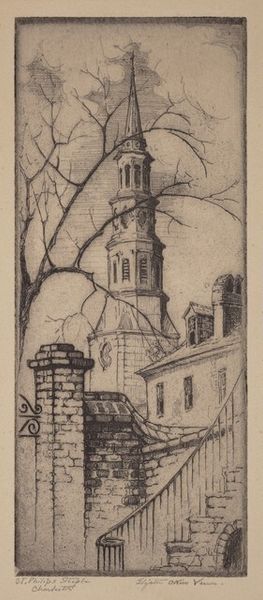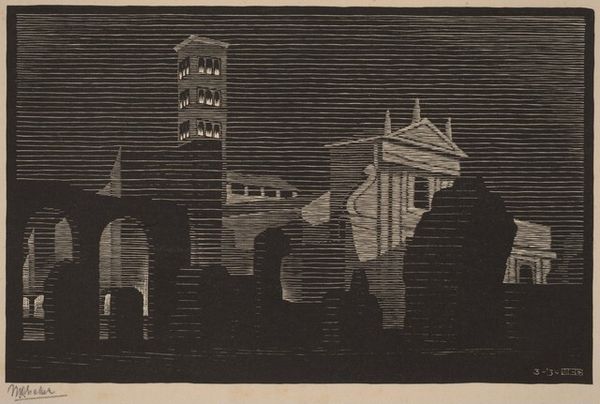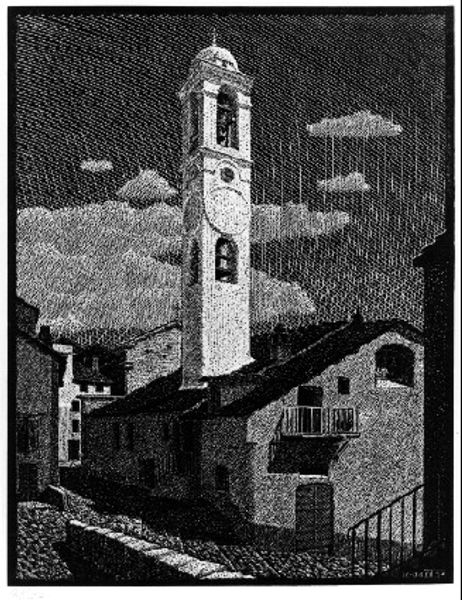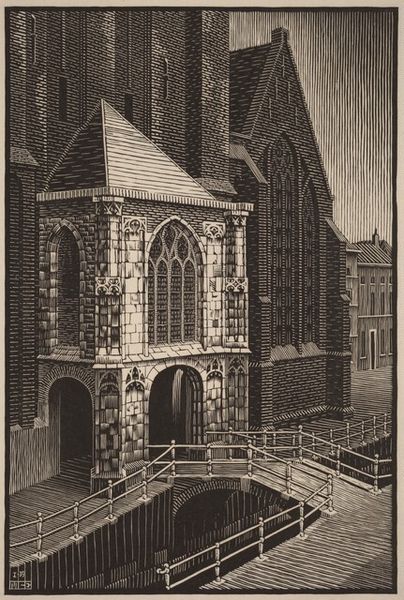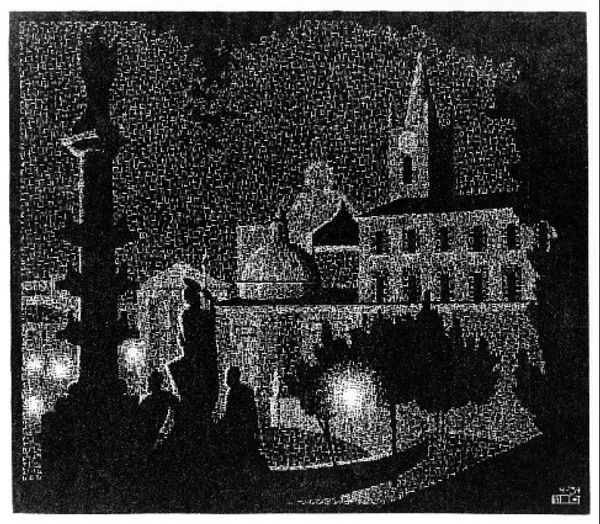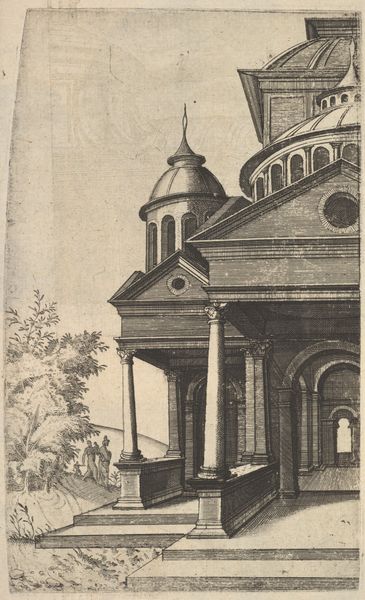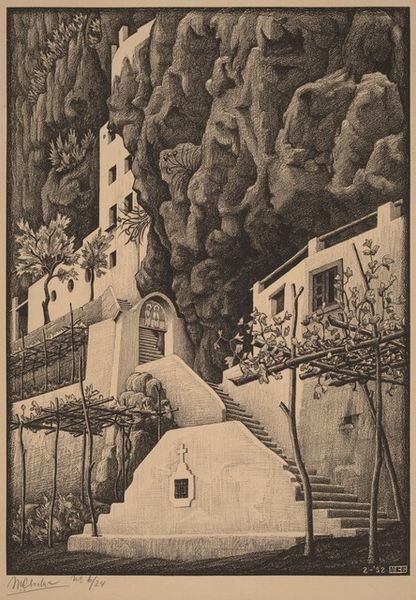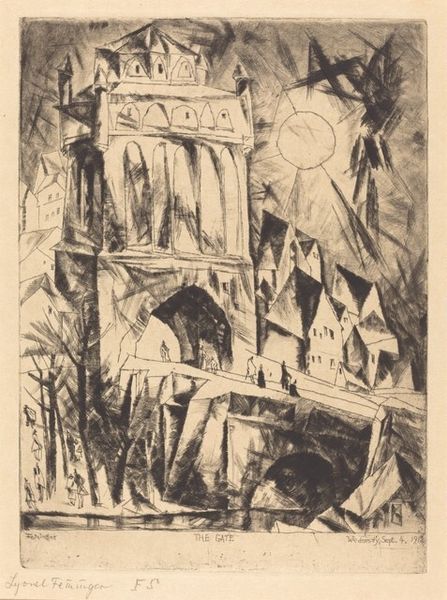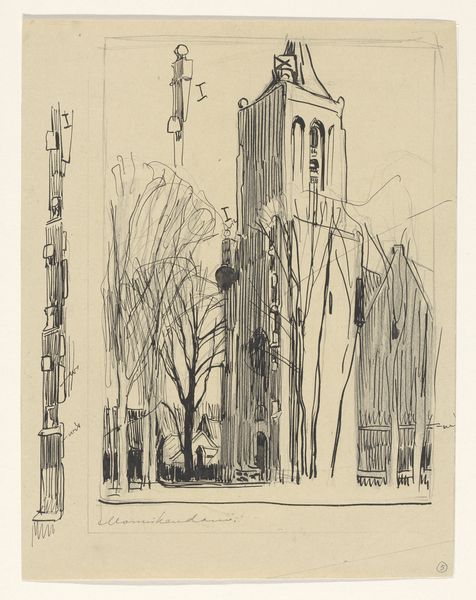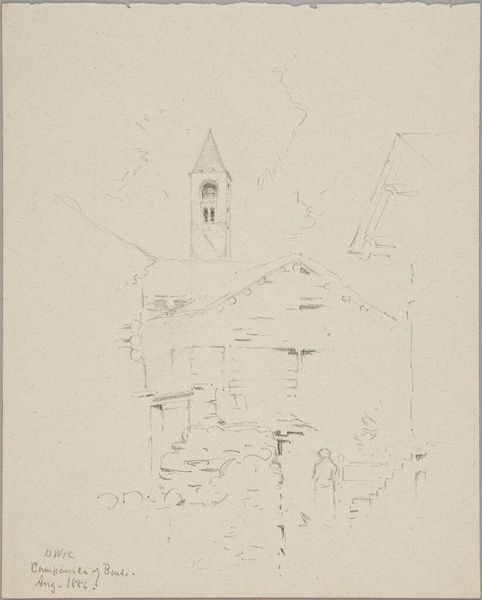
print, linocut, architecture
# print
#
linocut
#
linocut print
#
geometric
#
cityscape
#
modernism
#
architecture
Copyright: National Gallery of Art: CC0 1.0
Curator: Escher’s “San Giorgio in Vellabro,” a linocut from 1934, immediately brings to mind silent movie era chiaroscuro. What do you think? Editor: It's certainly striking. The way Escher's employed such stark contrast through the linocut process is quite fascinating. Look at how he uses this dense matrix of white lines crisscrossing to evoke light and shadow. This almost feels like labor, or a digital screen we've grown accustomed to, but rendered here by hand. Curator: You know, for me, the feeling is less technological and more spiritual. This small church feels almost ghostlike in the inky blackness. It reminds me of the way childhood drawings sometimes simplify buildings, yet there's an imposing weight of history pressing down from the dark sky above. I wonder if Escher intended to capture that paradox, a delicate memory battling against time itself. Editor: Time indeed! Linocut itself is fascinating in how it captures the very concept of labor and time as process. Each groove, each precise cut in that material. Think of it not just as artistic vision, but as hours of dedicated craft, each mark contributing to this ghostly image. We should not forget how craft such as printing historically allowed art to be distributed for greater public consumption. This piece feels more than just about spiritual spaces. Curator: Perhaps it's both. The print medium allowing for distribution as a gesture towards shared spiritual or historical experience, or perhaps it becomes simply a commodity in itself… there's a certain tension there. Ultimately, the work captures an enduring quality. Editor: Enduring indeed! And materially intriguing. Thank you for that perspective.
Comments
No comments
Be the first to comment and join the conversation on the ultimate creative platform.

